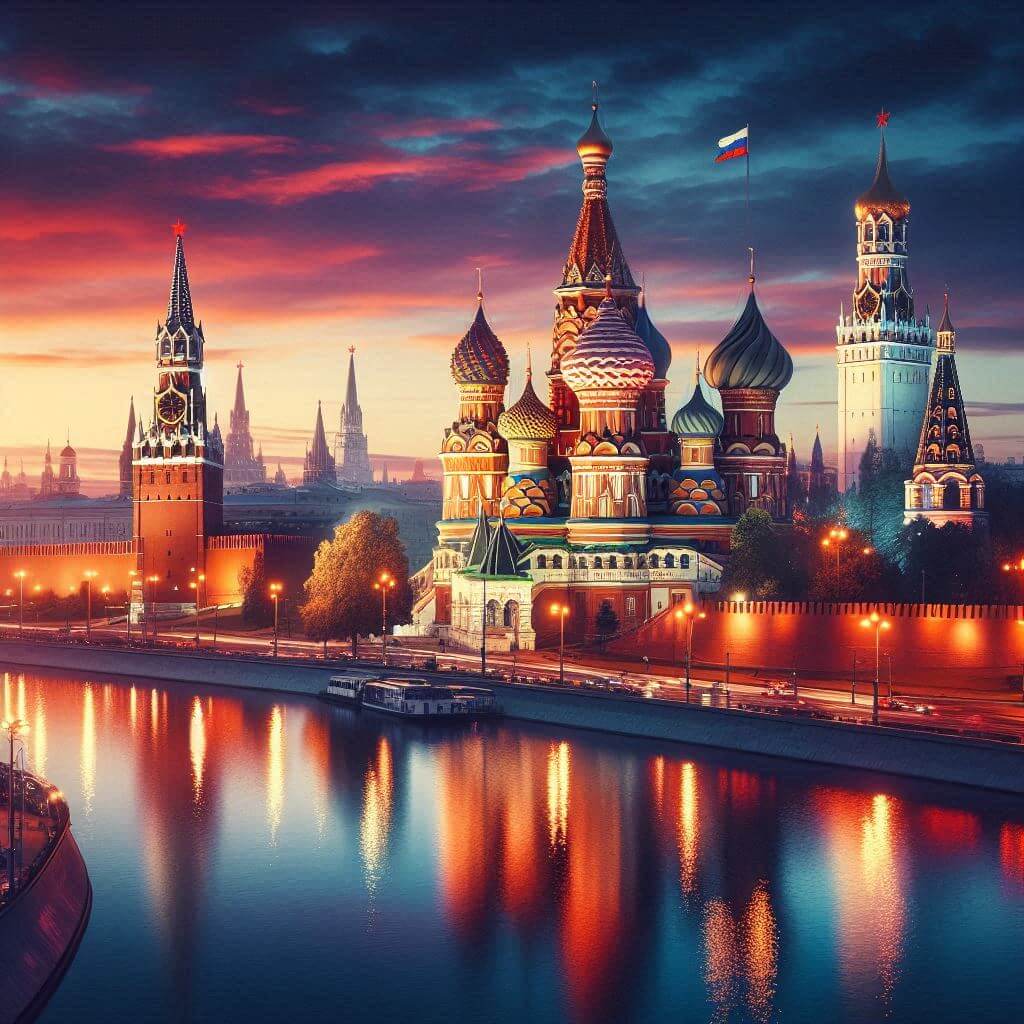The flag of Russia consists of three equal horizontal stripes: white on top, blue in the middle, and red on the bottom. This tricolor design, known as the "State Flag of the Russian Federation," represents the nation's rich history, cultural heritage, and modern identity.
Russia information
| National Flag Day | August 22nd |
| Sovereign state | Yes |
| Official name | Russian Federation |
| Capital | Moscow |
| Population | 145,934,027 |
| Area | 17,125,200 km² |
| Currency | Russian ruble (RUB) |
| Language | Russian |
| Continent | Asia, Europe |
| Region | Eastern Europe, Northern Asia |
| Subregion | — |
| Borders | Norway, Finland, Estonia, Latvia, Lithuania, Belarus, Ukraine, Poland, Kazakhstan, China, Mongolia, North Korea |
| Timezone | Kaliningrad Time (KALT) UTC+2, Moscow Time (MSK) UTC+3 |
| Calling code | +7 |
| Top-level domain | .ru |
History of the Russian Flag
 The current Russian flag was officially adopted on August 21, 1991, following the collapse of the Soviet Union. However, its history dates back to the 17th century. The tricolor was first used as a merchant flag in the 1690s under Tsar Peter the Great, inspired by the Dutch flag. It became the official flag of the Russian Empire in 1696. After the Bolshevik Revolution in 1917, it was replaced by the Soviet hammer and sickle flag. The tricolor was restored in 1991, symbolizing Russia's return to its pre-Soviet roots and the beginning of a new era in Russian history.
The current Russian flag was officially adopted on August 21, 1991, following the collapse of the Soviet Union. However, its history dates back to the 17th century. The tricolor was first used as a merchant flag in the 1690s under Tsar Peter the Great, inspired by the Dutch flag. It became the official flag of the Russian Empire in 1696. After the Bolshevik Revolution in 1917, it was replaced by the Soviet hammer and sickle flag. The tricolor was restored in 1991, symbolizing Russia's return to its pre-Soviet roots and the beginning of a new era in Russian history.
Symbolism and Design of the Russian Flag
The Russian flag's design is rich in symbolism, although there's no official meaning assigned to its colors. Traditionally, white is associated with nobility, frankness, and freedom. It represents the bright side of life and is linked to Russia's vast snowy landscapes. Blue symbolizes faithfulness, honesty, and integrity. It's often connected to the many rivers and lakes of Russia, as well as the nation's spiritual depth. Red stands for courage, generosity, and love. It's associated with the beauty of Russian nature and the blood shed by Russian people in defense of their country. Together, these colors embody the diverse geography, rich cultural tapestry, and resilient spirit of the Russian nation.
Usage and Significance of the Russian Flag
 The Russian flag is a prominent national symbol, displayed on government buildings, schools, and during official ceremonies. It plays a crucial role in fostering national identity and unity. The flag is prominently featured during national holidays, particularly Russia Day (June 12th) and National Flag Day (August 22nd). In international contexts, it represents Russia at diplomatic events, global sporting competitions, and cultural exchanges. The flag serves as a powerful reminder of Russia's historical continuity, its position as a major world power, and its unique cultural identity bridging Europe and Asia.
The Russian flag is a prominent national symbol, displayed on government buildings, schools, and during official ceremonies. It plays a crucial role in fostering national identity and unity. The flag is prominently featured during national holidays, particularly Russia Day (June 12th) and National Flag Day (August 22nd). In international contexts, it represents Russia at diplomatic events, global sporting competitions, and cultural exchanges. The flag serves as a powerful reminder of Russia's historical continuity, its position as a major world power, and its unique cultural identity bridging Europe and Asia.
Interesting Facts About the Russian Flag
- The Russian flag shares its colors with many other Slavic nations, reflecting shared cultural and historical ties.
- During the Soviet era (1922-1991), the hammer and sickle flag was used, with the tricolor banned in the USSR until 1987.
- The exact shades of the flag colors are specified by law to ensure consistency in all official representations.
- Russia's naval ensign features a blue St. Andrew's cross on a white field, a design dating back to Peter the Great's reign.
- The flag has inspired various patriotic symbols and is often incorporated into Russian sports uniforms and cultural events.